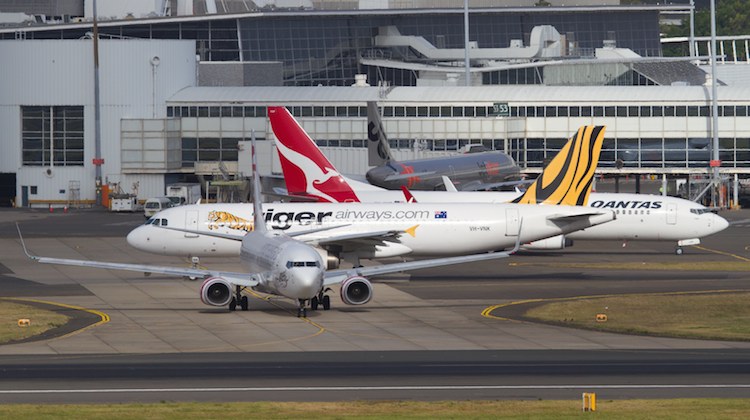
Australia’s local airlines cut the number of domestic seats for a fifth straight month in November as capacity discipline remains the order of the day amid soft passenger numbers and sluggish demand for air travel, new figures show.
A Bureau of Infrastructure, Transport and Regional Economics (BITRE) report says the number of available seats for regular public transport (RPT) flights fell 3.5 per cent in November, compared with the same month a year earlier.
Domestic capacity has been declining for the past five months, with June the more recent month Australian carriers added seats into the local market.
Passenger numbers on RPT flights fell 1.3 per cent to 4.8 million in November 2014, compared with from 4.86 million in the same month a year earlier.
The BITRE report said load factors – a measure of how full flights were – rose more than one percentage point in November.
“With RPT passenger traffic falling at a slower rate than capacity, the industry wide load factor increased from 77.1 per cent in November 2013 to 78.7 per cent in November 2014,” BITRE said.
“Load factors on individual routes increased on 36 of the 61 RPT routes for which data is available in both years.”
The November figures come on top of recent comments from Australia’s largest travel agent Flight Centre regarding the softness of the domestic market.
Flight Centre chief executive Graham Turner said trading conditions over the first five months of 2014/15 had been challenging, given the lack of uptick in leisure travel spending, adding that the growth outlook for the company’s Australian business was currently unclear.
“When we set out our full year growth targets in August, we expected the uncertainty surrounding Australia’s Federal Budget would have abated as the first half drew to a close and consumer confidence and spending would have started to rebound,” Turner said on December 18.
“Unfortunately we are yet to see tangible signs of a full recovery and the overall leisure travel market continues to be flat year-on-year.”
Australia’s second busiest route measured by available seats – Brisbane-Sydney – experienced a 4.3 per cent fall in passenger numbers in November, compared with the prior corresponding period. At the same time, domestic carriers reduced the number of available seats on the city-pair by 9.1 per cent.
Even cargo operations were not immune from local conditions, with total cargo movements down 13.8 per cent in November at 32,400 thousand tonnes, compared with the same month a year earlier.










